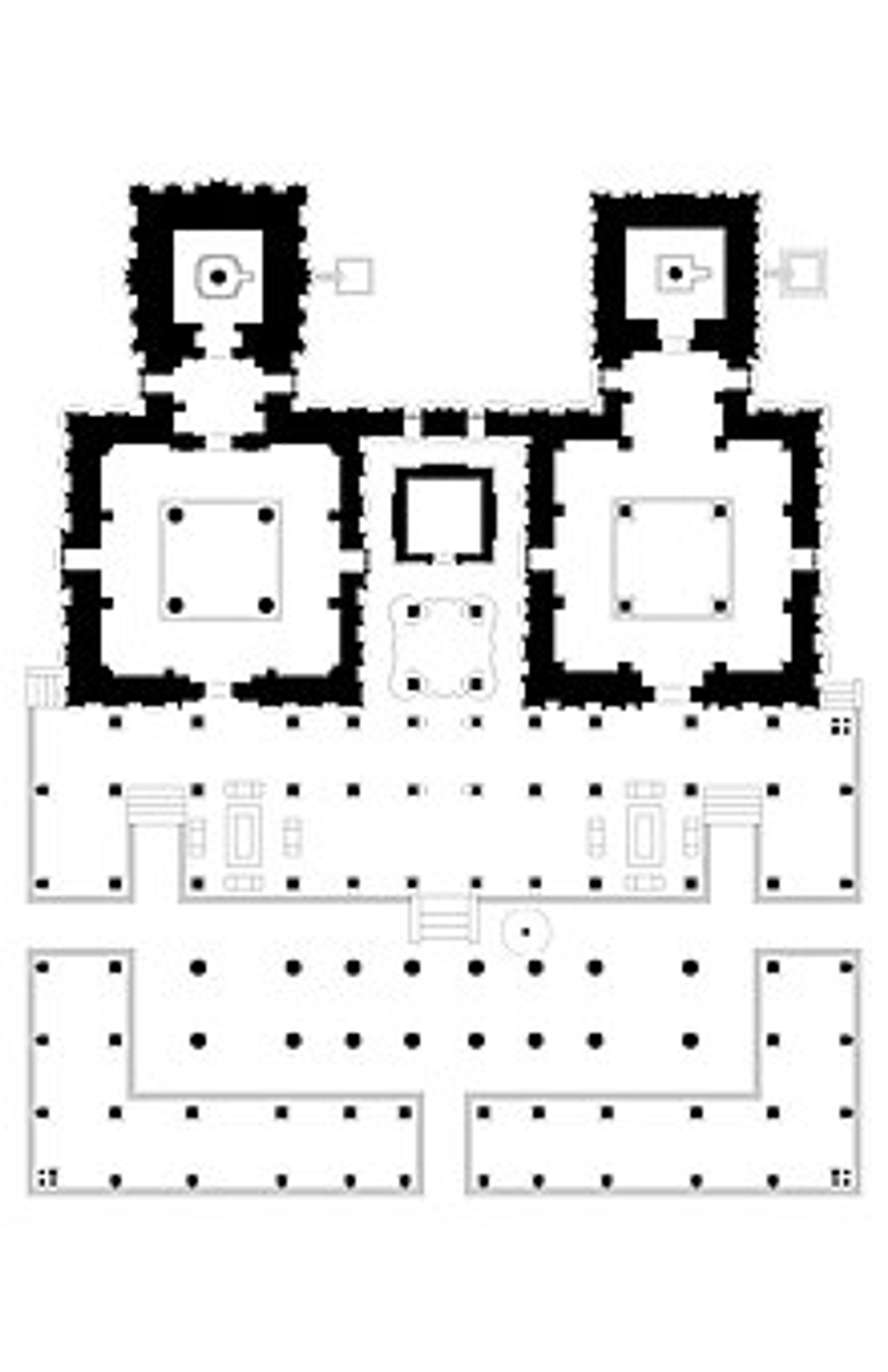Nandigram’s Twin Shiva Temples
Approximately 60 kilometres from the bustling city of Bengaluru lies the tranquil village of Nandigram. Resting amidst the numerous hills that adorn its landscape, two temples emerge as remarkable wonders of design and construction – the Bhoganandiswara Temple and the Arunachaleswara Temple, twin temples that have stood side by side for centuries.

The twin temples I Source: Wikipedia
Situated at the base of the Nandi hills, about 60 kilometres from the capital city of Karnataka, the Bhoganandiswara Temple and Arunachaleswara Temple are twin Hindu Shiva temples located within a single complex, in the village of Nandi, Chikkaballapur district.
In the Nandi hills, three temples representing the three phases of Shiva's existence can be found. The Bhoganandiswara Temple, dating from the ninth to the fifteenth century AD, stands as one of the most significant examples of Dravidian architecture. It is Karnataka's oldest surviving temple in the Nolambavadi-style of Dravidian architecture. This complex comprises temples dedicated to two of Lord Shiva's manifestations: Arunachaleshwara (childhood) and Bhoganandiswara (youth), while the shrine for Yoganandishwara (renunciation stage) is situated atop Nandi Hill.
Within the complex, the northern shrine is dedicated to Bhoganandiswara and the southern shrine to Arunachaleswara. The space between these twin temples holds the little shrine of Uma Maheshwara, symbolising the wedding of Shiva and Parvathi. In front of Uma Maheshwara's sanctum sanctorum lies the Kalyana mandapa, intricately carved during the Hoysala dynasty. Made of finely carved black stone, the Kalyana mandapa features a massive soapstone roof, supported by four beautifully carved pillars and a platform. Each pillar is adorned with exquisite carvings of creepers, flowers, and birds, depicting the four cosmic couples: Uma-Maheshwar, Laxmi-Vishnu, Brahma-Saraswati, and Swaha-Agni.
Both Bhoganandiswara and Arunachaleshwara have statues of their respective vehicles, Nandi, patiently waiting in front of them. Each temple consists of a garbhagriha, a sukanasi, and a navaranga, all featuring sculptured jalis. The prakara houses two devi shrines, Apita Kuchamba and Girijamba, behind the main shrines, along with other structures like Vasantha mandapa, Tulabhara mandapa, and a square-stepped tank. The twin temples share a large courtyard and open sabha-mandapa. Each temple has an antarala, a garbhagriha, and a Dravida-style vimana, both adorned with beautiful stone shikharas in nearly identical styles.
The Bhoganandiswara temple was the first constructed within the complex, and the Arunachaleswara temple was added shortly afterwards to its south. Various rulers patronised the Bhoganandiswara Temple, yet they respected its original architectural style, merely making archaic additions. Inscriptions suggest that the 9th-century shrine was related to the local Kannada Nolamba dynasty, and several South Indian dynasties, such as the Cholas, Hoysalas, and the Vijayanagara Empire, later contributed to its form. The temple's architecture and iconography date back to the 9th or 10th century, and the Cholas added the first layer of the courtyard and elaborate pillars in the eleventh century. The Vijayanagara monarchs erected the main entrance, wall, and the Shringeri Teertham water reservoir. Folklore credits Lord Krishandevaraya, the legendary ruler of Hampi, with constructing the Shringeri Teertham water tank.
Just a short distance from the Bhoganandiswara Temple stands its twin, the Arunachaleswara Temple, dedicated to the same deity. According to tradition, the Gangas constructed this temple, which was later enhanced by successive rulers. Similar to its counterpart, the Arunachaleswara Temple houses a magnificent lingam in the main sanctum, evoking intense devotion among pilgrims. The tapering vimana over the sanctum sanctorum was rebuilt by the Cholas, who replicated the original northern shrine. Standing in front of the temple is an imposing version of Lord Ganesha, known as Ugra Ganapati or Simha Ganapati.
The Bhoganandiswara temple's northern shrine is the main temple, believed to have been built by the Banas and later extended by the Cholas. The temple's interior is a breathtaking display of artistry and craftsmanship, with intricately carved figures on all sides of the four pillars in the navaranga. The ceiling features ashtadikpalakas with Shiva and Parvati in the central panel, and the base showcases a frieze of elephants, yaalis, and lions intertwined.
The temples stand as enduring legacies of several dynasties that not only preserved but also enriched them. Each addition seamlessly blends into the overall architecture, highlighting the brilliance of this artistic masterpiece. These temples serve as magnificent examples of diverse architectural styles and elegance that have flourished over thousands of years, embodying the rich and longstanding spiritual traditions of the subcontinent.

The entrance to the temple I Source: bangaloretourism.com

Vimana of the Arunachaleswar Shrine I Source: Wikipedia

Vasantha Mandapa I Source: Wikimedia Commons

The plan of the twin temples I Source: Wikipedia


